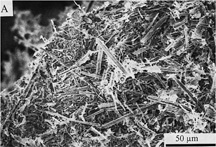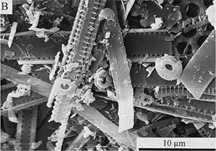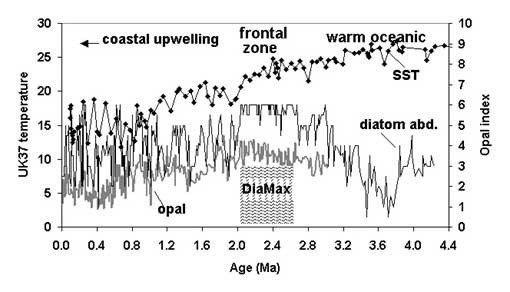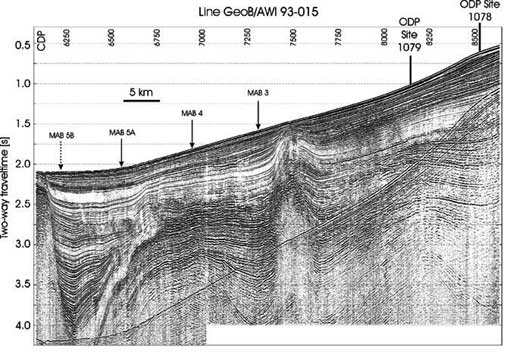Frontispiece 1:
The two pictures on the left side are scanning
electron microscope photographs of dry piece of sediment from T. antarctica-rich
interval (Sample 175-1084A- 47X-2W, 70-73 cm). (A) General aspect, (B)
Close-up view. Note the fragments of Thalassiothrix and the presence
of coccoliths. The graph on the right side illustrates the sea
surface temperature (SST) record derived from UK37' index (alkenones),
diatom abundance ,and opal index from Site 1084. Note the diatom maximum
(DiaMax) in the frontal zone and the decrease in abundance towards the
warm oceanic region.




